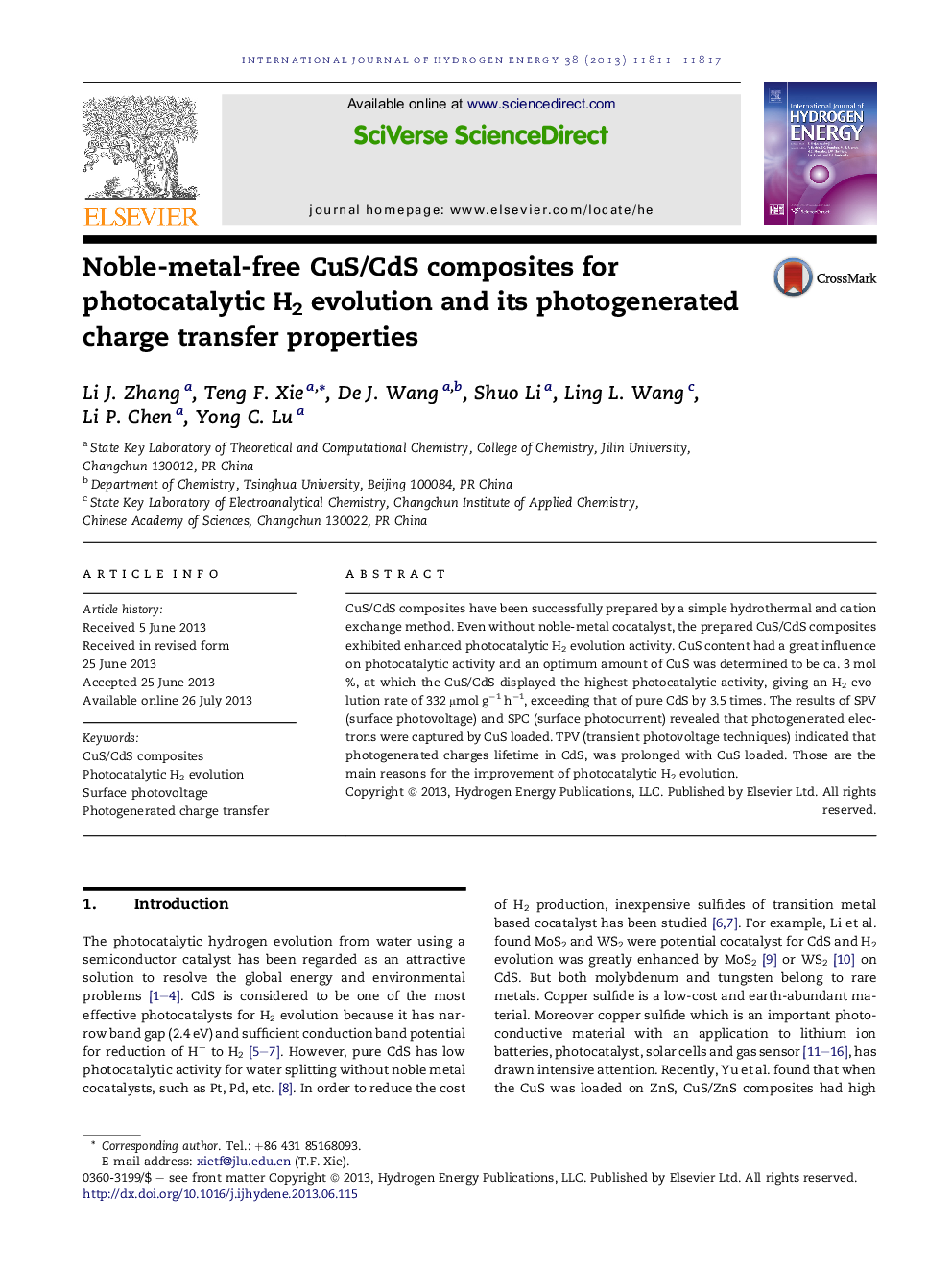| Article ID | Journal | Published Year | Pages | File Type |
|---|---|---|---|---|
| 1274897 | International Journal of Hydrogen Energy | 2013 | 7 Pages |
•The CuS/CdS composites were prepared via ion exchange and hydrothermal method.•The CuS/CdS exhibited enhanced activity for photocatalytic H2 evolution.•The surface photovoltage, photocurrent and transient photovoltage were used.•The results indicated that photoelectrons were captured by CuS.•The result revealed that the photogenerated carrier life was increased by CuS.
CuS/CdS composites have been successfully prepared by a simple hydrothermal and cation exchange method. Even without noble-metal cocatalyst, the prepared CuS/CdS composites exhibited enhanced photocatalytic H2 evolution activity. CuS content had a great influence on photocatalytic activity and an optimum amount of CuS was determined to be ca. 3 mol%, at which the CuS/CdS displayed the highest photocatalytic activity, giving an H2 evolution rate of 332 μmol g−1 h−1, exceeding that of pure CdS by 3.5 times. The results of SPV (surface photovoltage) and SPC (surface photocurrent) revealed that photogenerated electrons were captured by CuS loaded. TPV (transient photovoltage techniques) indicated that photogenerated charges lifetime in CdS, was prolonged with CuS loaded. Those are the main reasons for the improvement of photocatalytic H2 evolution.
